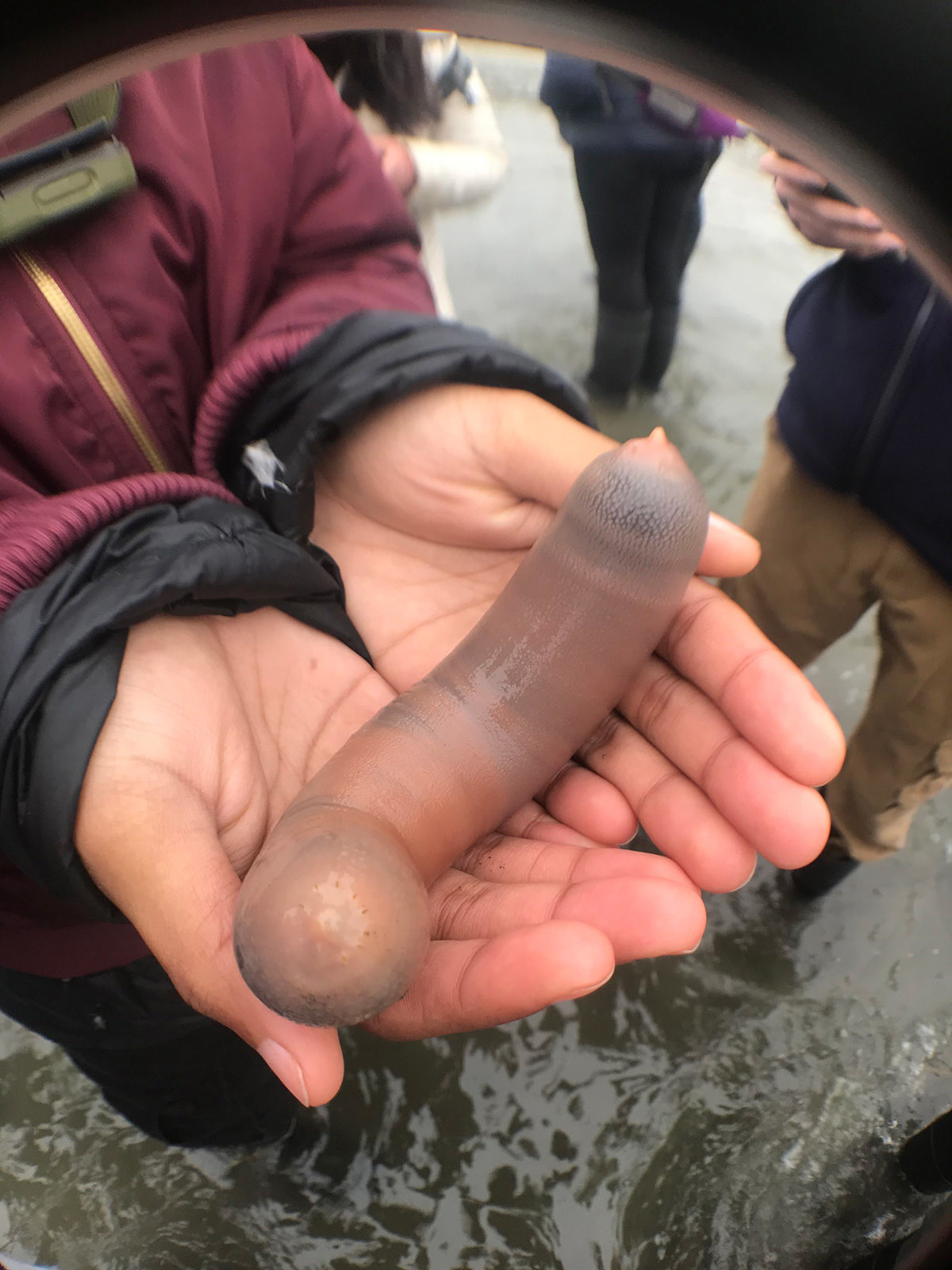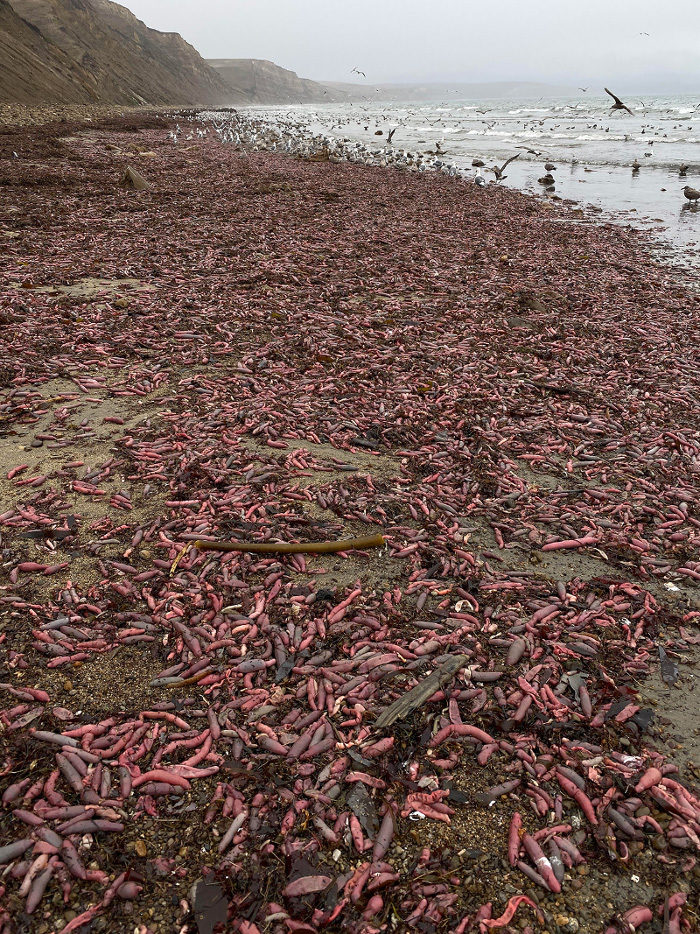I saw thousands of these on Drakes Beach on Dec. 6, after the recent storm. What happened? - David FordYou could be forgiven for being offended by the above photo: thousands of 10-inch wiggly pink sausages strewn about Drakes Beach. The same phenomenon has been reported over the years at Pajaro Dunes, Moss Landing, Bodega Bay, and Princeton Harbor. I've heard my share of imaginative theories from beachcombers, such as flotsam of a wrecked bratwurst freighter. In truth, these are living denizens of our beaches rudely, yet also mercifully, mostly called "fat innkeeper worms."
What in the name of Secretariat is a fat innkeeper worm? The fat innkeeper worm (Urechis caupo) is a type of spoonworm (Ehciuroidea), an order of non-segmented marine worms identified by a spatula-shaped proboscis used for feeding and sometimes grasping or swimming. The fat innkeeper's family (Urechidae) contains only four species worldwide, collectively known as either innkeeper worms or, well, penis fish. This is why we prefer scientific names. U. caupo is the sole representative in North America, found only from Southern Oregon to Baja, with the bulk of sightings between Bodega Bay and Monterey. So, whether or not you feel privileged by its presence, U. caupo is an almost uniquely California experience, perhaps having the best claim for State Worm.
Yes, the physical design of the fat innkeeper worm has some explaining to do. But the fat innkeeper is perfectly shaped for a life spent underground. Within a beach or mudflat, it digs a U-shaped burrow extending a few feet in length but no wider than the worm itself. The burrow's front entrance pokes up like a little sand chimney. These can be seen clustered around the low tide line of a mudflat or sandy beach. The backdoor is marked by a pile of worm castings, which get projected out the end of the tunnel with a blast of water from the worm's hindquarters.

The residual bits don't go to waste. These leftovers are taken by a cast of freeloaders who live in the innkeeper's burrow: a clam (Cryptomya californica); a "sequined" scale-worm (Hesperonoe adventor); a pea crab (Scleroplax granulata or Pinnixa franciscana); a hooded shrimp (Betaeus longidactylus); and even a fish, the arrow goby (Clevelandia ios). The first three are residents in the U-shaped Hotel California, whereas the shrimp and goby come and go, the latter mooching off other industrious invertebrates. The goby may even bring food to the crab, who minces it into smaller pieces, which the goby steals. In turn, these tenants give the fat innkeeper its preferred name.
Apparently, the fat innkeeper takes no (or little) issue in being the one team player amongst a bunch of clingers-on. In fact, it's the textbook example of commensalism - a relationship in which (simply put) one organism forms a dependency on another, the latter being neither helped nor severely hurt in the relationship. Lucky it.
The innkeeper is a survivor with fossil evidence of U-shaped burrows dating back 300 million years. They are quite long-lived, recorded up to 25 years old. That said, the fat innkeeper has many threats. They are preyed on by otters, flounders, sharks, rays, gulls, and humans.
And then there are phenomena such as the one depicted in this photo. So how did thousands of fat innkeeper worms get strewn across Drakes Beach? Well, we're seeing the risk of building your home out of sand. Strong storms - especially during El Niño years - are perfectly capable of laying siege to the inter-tidal zone, breaking apart the sediments, and leaving their contents stranded on shore. Do these high-energy storm events have a long-term impact on fat innkeepers? So far as I know, there are no programs explicitly taking stock of the worms. However, you can help monitor this and other species by continuing to use citizen science to report mass strandings, noting when and where they took place, and roughly how many stranded worms you see.




Reader Comments
to our Newsletter